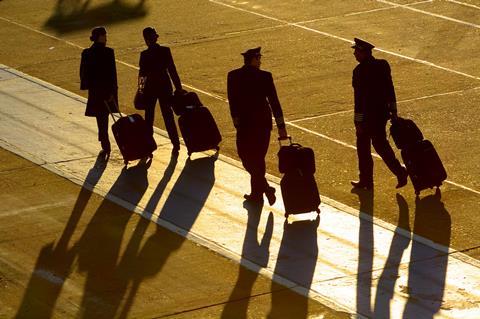A group of US unions has come out against raising the pilot retirement age from 65 currently – an idea that has been circulating in order to help alleviate the current pilot shortage.
In a letter to US senators on 19 July, the seven unions deny a shortage even exists, calling it a “false narrative” created by airlines and an “excuse for some airlines to water down pilot training requirements and flight experience time”.
The letter’s signatories are: Air Line Pilots Association, International (ALPA), Association of Flight Attendants, CWA (AFA-CWA), International Association of Machinists and Aerospace Workers (IAM), National Air Traffic Controllers Association (NATCA), Professional Aviation Safety Specialists (PASS), Transportation Trades Department, AFL-CIO (TTD) and the Transport Workers Union of America (TWU).

They say that the proposal would have “many unintended consequences” for both passengers and junior pilots, and will not increase pilot supply as intended.
“Increasing the pilot retirement age would force pilots over 65 to leave desirable international routes to fly domestic routes often operated by smaller aircraft that operate more frequently,” the seven unions write. “This requires retraining on different equipment, which increases costs to airlines and pilots who must spend additional time and resources to receive training.
“In addition, pilots over 65 would displace pilots on domestic-only routes, putting the future pilot pipeline at risk,” the letter adds.
Airlines have been forced to cut their schedules and cancel flights this summer due to a dearth of qualified cockpit crew as the industry recovers more quickly than expected from Covid-19.
”The real problem is airline management’s poor planning for a pandemic recovery,” the letter says. “Airlines furloughed, displaced, and moved pilots out of their seats and off of their aircraft. As a result, airlines are now forced to needlessly retrain pilots, resulting in a training backlog of their own making.”
Various aviation interest groups have proposed raising the retirement age to 67 or 68, as well as easing flight-time requirements as methods to increase pilot supply as the industry clamours for qualified flight deck professionals in the post-coronavirus environment.
Thousands of pilots took early retirement packages during the industry downturn in 2020-2021, leaving many empty seats on flight decks across the sector. Aviation analysts say the gap is forecast to last for several years, and that it will get worse before it gets better.
Pilot consultancy Future and Active Pilot Advisors (FAPA) has said that in 2022, US airlines are on pace to hire for 13,000 pilot jobs. In the first six months, 6,681 pilots were hired, with more than half of that number going to Delta Air Lines, American Airlines and United Airlines.
According to FAA civil airman figures, in 2021 the US regulator issued just 5,020 original air transport pilot (ATP) certificates – the required qualification to get a job as a commercial airline pilot. But before pilots can take ATP exams, most must show 1,500h of aeronautical experience – a requirement proving a bottleneck to increasing pilot supply long-term.
The so-called ”1,500-hour rule”, introduced more than a decade ago following a fatal airline crash that was attributed in part to a lack of experience, has generated a great deal of controversy in recent months. No other country has a similar aeronautical experience rule.


























